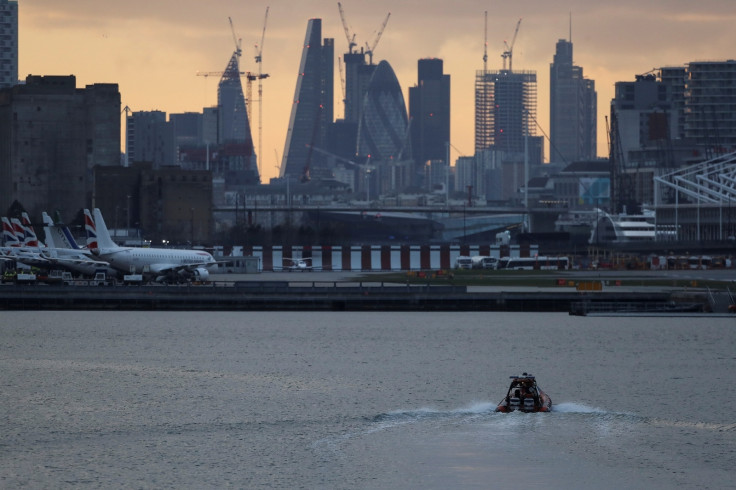London City Airport WW2 bomb will be dragged out to sea and detonated underwater
KEY POINTS
- The discovery of the 500kg bomb forced nearby London City Airport to close.
- A carefully planned operation will see it dragged out to sea and destroyed.
An unexploded Second World War bomb that caused widespread travel disruption will be towed out to sea for nine hours before being detonated in a controlled explosion.
The massive 500kg bomb was discovered near George V Dock in East London on Sunday (11 February), forcing nearby London City Airport to close to air traffic as experts attempted to bring the device under control.
A Royal Navy team will drag the bomb 20km along the Thames during the risky nighttime operation. Once it reaches its destination in Shoeburyness, Essex, divers will attach "powerful explosives" to the bomb and it will be detonated underwater.
A spokesperson for Mine Warfare & Patrol Vessels confirmed that the bomb was successfully removed from its location early on Tuesday morning.
Lieutenant Commander Sean Heaton said the biggest danger to officers is the mud and silt which could complicate the operation.
"We are controlled by the tides in the Thames as to when we can remove it from the dock," he said. "It is quite dark on the seabed, silt makes it challenging for a diver to stop the mud getting in the way. We will strap a lifting device to the bomb so we can lift it off the seabed and towards the surface.
As London sleeps Royal Naval Clearance Divers have successfully towed the 500 kg Unexploded Bomb out of George V Dock into the Thames. Divers will now carefully tow the bomb out to sea over the next 8 hours. BZ Team for keeping the British Public safe @RoyalNavy @VAdmJWoodcock pic.twitter.com/4QOLgQ6CAd
— Captain MFP (@CaptainMFP) February 13, 2018
"There is a minimum chance of anything going wrong, but the Royal Navy divers have received extremely good training and have very good equipment.
"It will be taken to Shoeburyness in an eight or nine hour transit and will be towed behind a rib before we attach our own explosives onto the audience and conduct a controlled explosion.
"There are a number of teams, one team of four are on the diving operation and two teams conducting the rib operation."
London City Airport has reopened to passengers following the disruption and is expected to operate as normal on Tuesday.






















